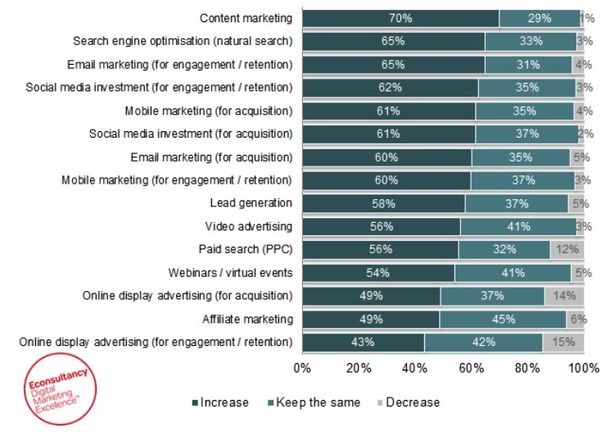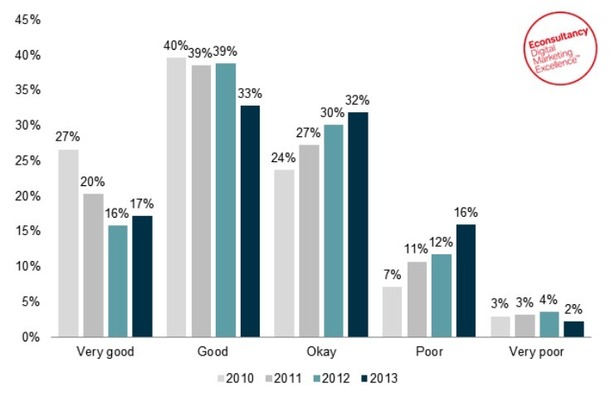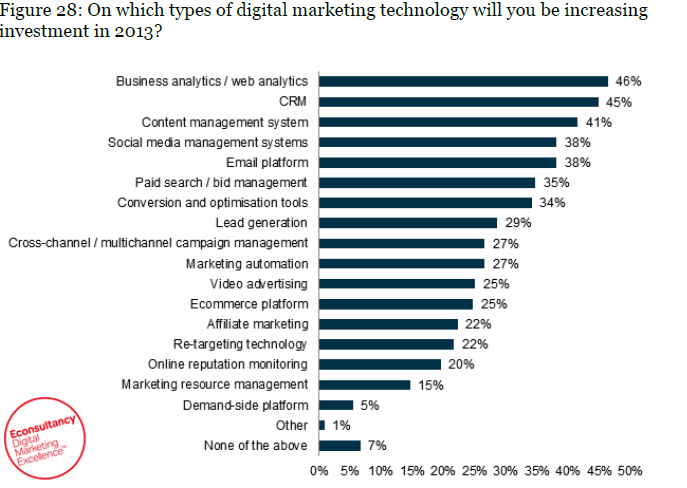A recent report revealed that while budgets for digital marketing are expected to increase across many specific channels, including email marketing, SEO and mobile, one major component of digital marketing is decreasing and has in fact been falling steadily since 2010.

The report, a joint effort between Econsultancy and Responsys (full disclosure: the latter is my employer), highlights the findings of a survey conducted of more than 800 company and agency marketers.
Titled “Marketing Budgets 2013” the report clearly brings to a light a unmistakable paradox when it comes to digital marketing and digital marketers.
The Good
As mentioned, budgets for digital marketing are expected to increase in 2013 with nearly 3/4 of respondents replying they intend to spend more.
To take it one step further, of those companies increasing their digital marketing budgets, 56% will increase them by more than 20%.
So far so good, right?
In case you were out one day last week, we do live in a digital world now so you would think marketers would realize this and thus increase their spend accordingly.
And they are, and here’s specifically where they are planning on spending more:
No surprise here in that content marketing is atop the charts, however, I was somewhat surprised that the percentages associated with mobile marketing were not higher.
Could it be that mobile marketing remains “elephant in the room” for marketers?
Perhaps.
It is good, too, to see that dollars attributed to retention and engagement are increasing.
The Paradox
“A statement or proposition that seems self-contradictory or absurd but in reality expresses a possible truth.”
That’s just one definition of the word “paradox,” but when you consider the following you will see that that description fits like a glove when it comes to digital marketing and those marketers entrusted with its future.
The following is culled directly from an article discussing the findings written by David Moth, Senior Reporter at Econsultancy:
“But despite the planned increase in investment, only half (50%) of companies surveyed claim to have a ‘good’ or ‘very good’ understanding of ROI from digital marketing. This is down from 55% last year and continuing a trend of decline since 2010 when the figure was 67%. Conversely, the number of businesses that said their understanding of ROI was ‘poor’ or ‘very poor’ has steadily increased from 10% in 2010 to 18% this year.”
So, as the spending for digital marketing goes up, the understanding of it, specifically from an ROI perspective, comes down.
And the obvious question is why?
Is it because social media has continued its rampant growth over the same time frame and now mobile marketing is all the rage and both remain an enigma when it comes to true measurement and analytics? Or least to digital marketers?
It’s like going out and buying the latest and greatest whatever – a car, a tool, a piece of machinery, whatever. It’s as if marketers know they need to get this new “thing” because all the other kids have it so they don’t want to be left out.
The problem is when they get it home, there is no instruction manual. And they sit at home feeling frustrated that they can’t play with their new “thing.”
It would appear, however, that that level of frustration is spurring them to take action.
Looks like the “kids” want to “play” and they are willing to spend to learn how to do it.
Sources: Econsultancy, Responsys, Google Images
Named one of the Top 100 Influencers In Social Media (#41) by Social Technology Review and a Top 50 Social Media Blogger by Kred, Steve Olenski is a senior creative content strategist at Responsys, a leading global provider of on-demand email and cross-channel marketing solutions, and a member of the Editorial Board for the Journal of Digital & Social Media Marketing. He can be reached via Twitter, LinkedIn or Email.



